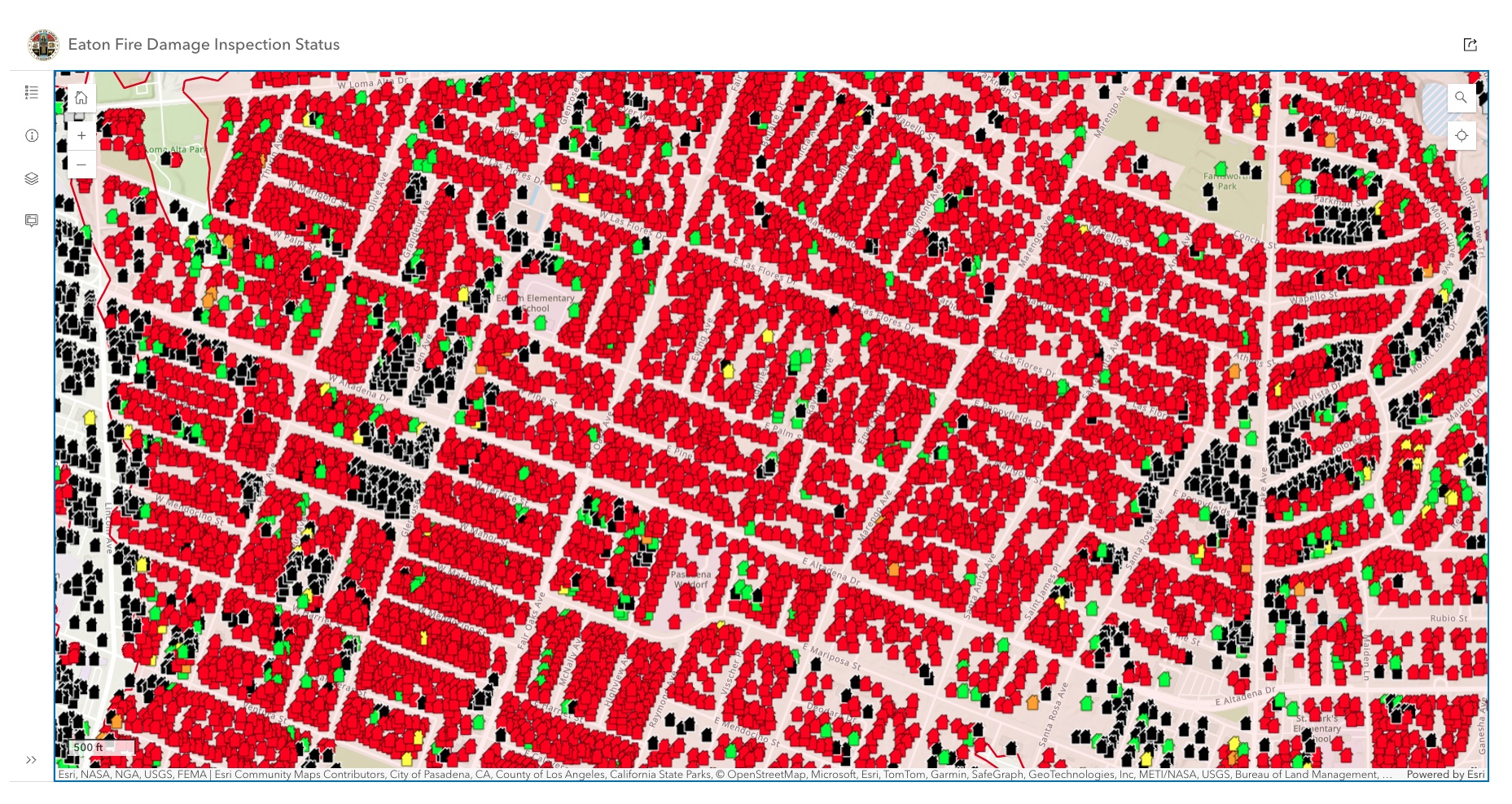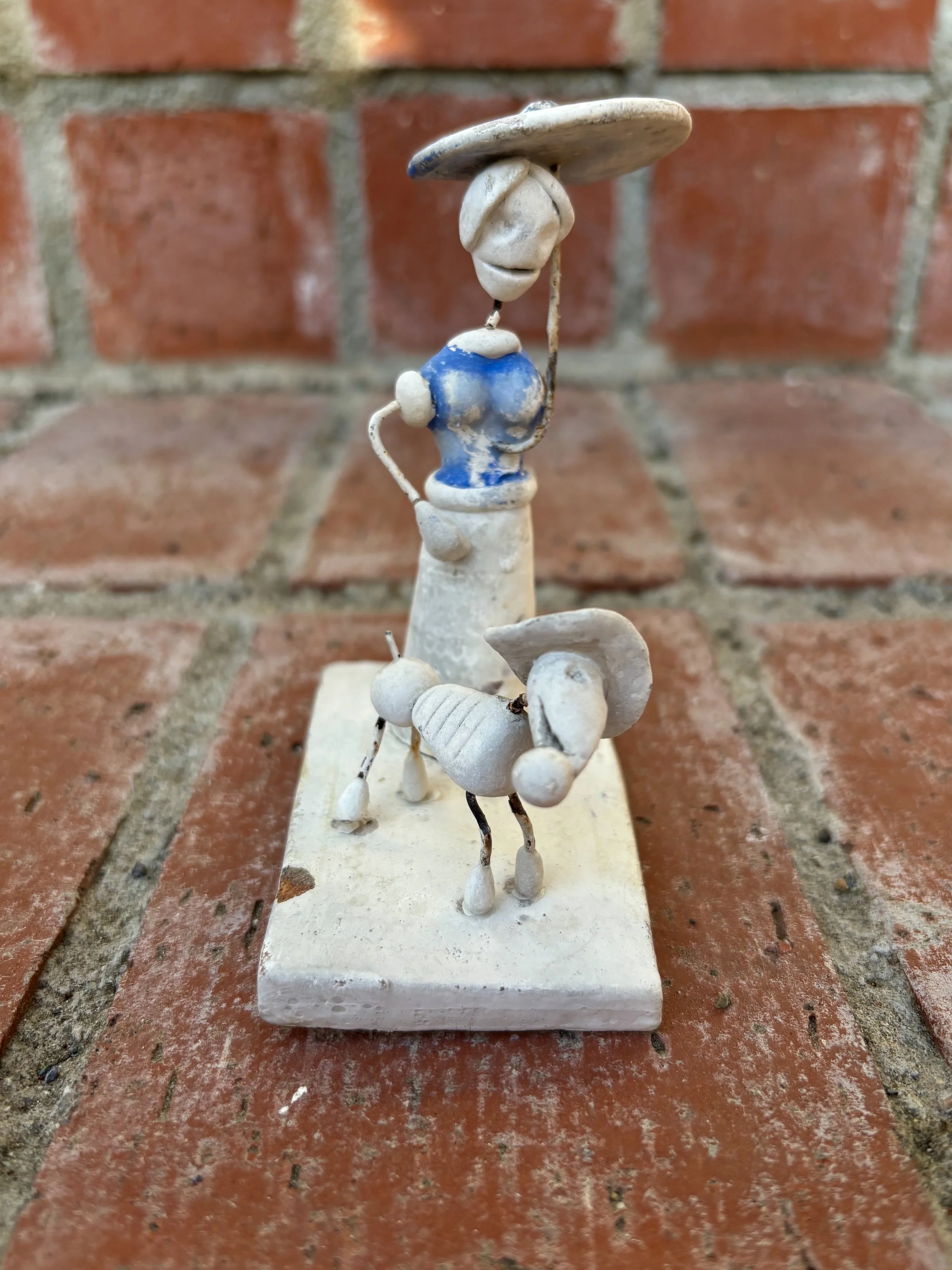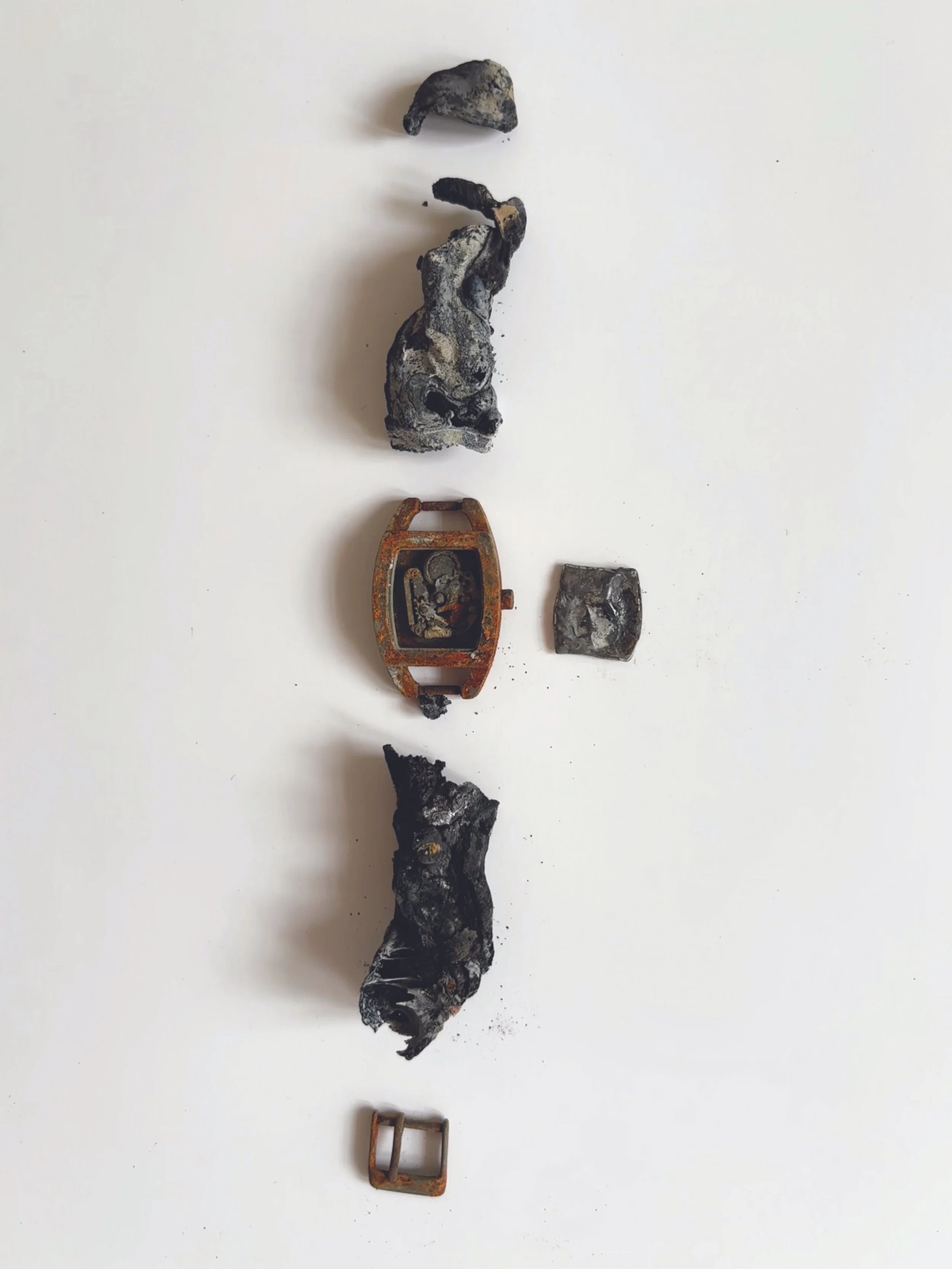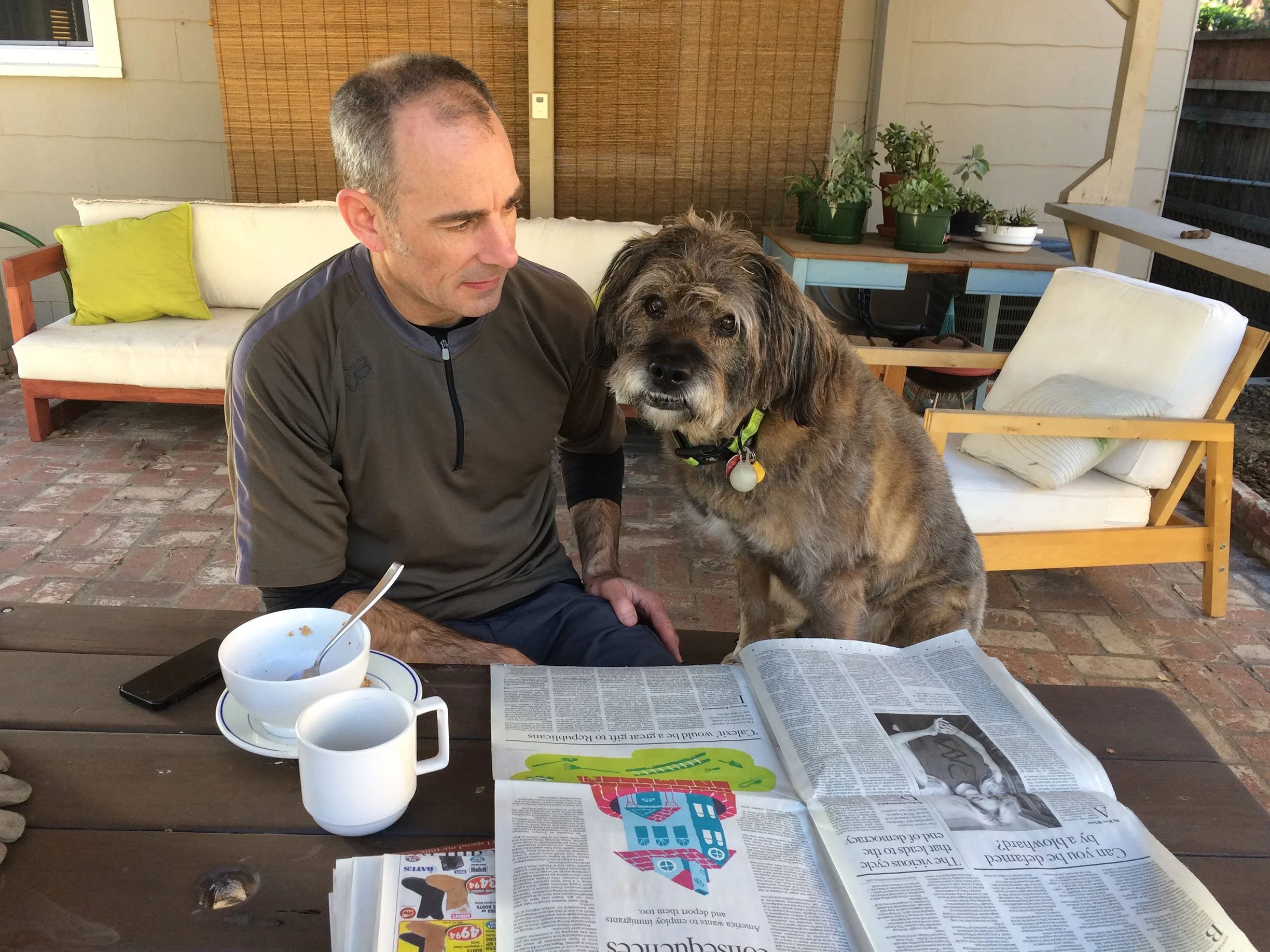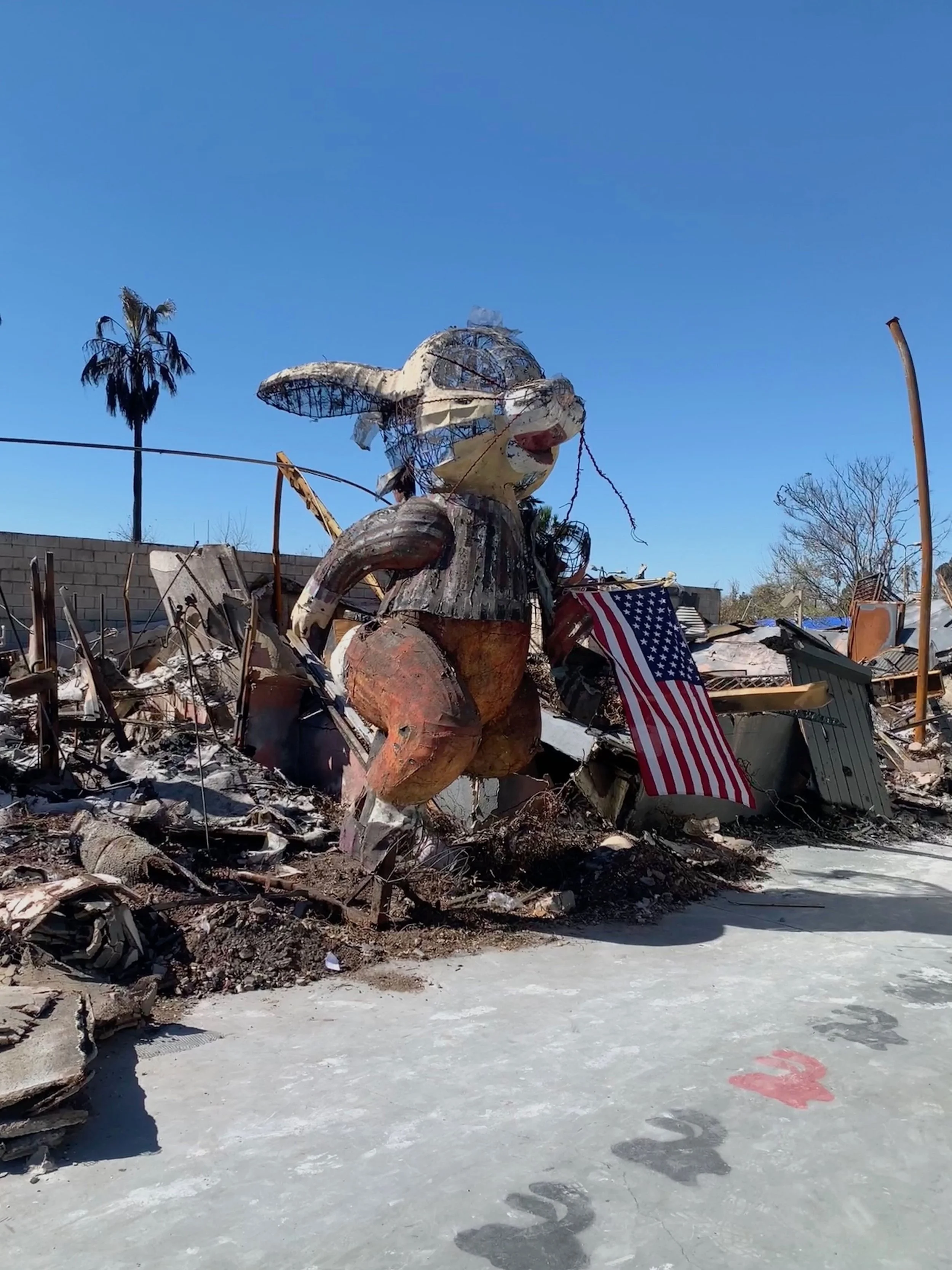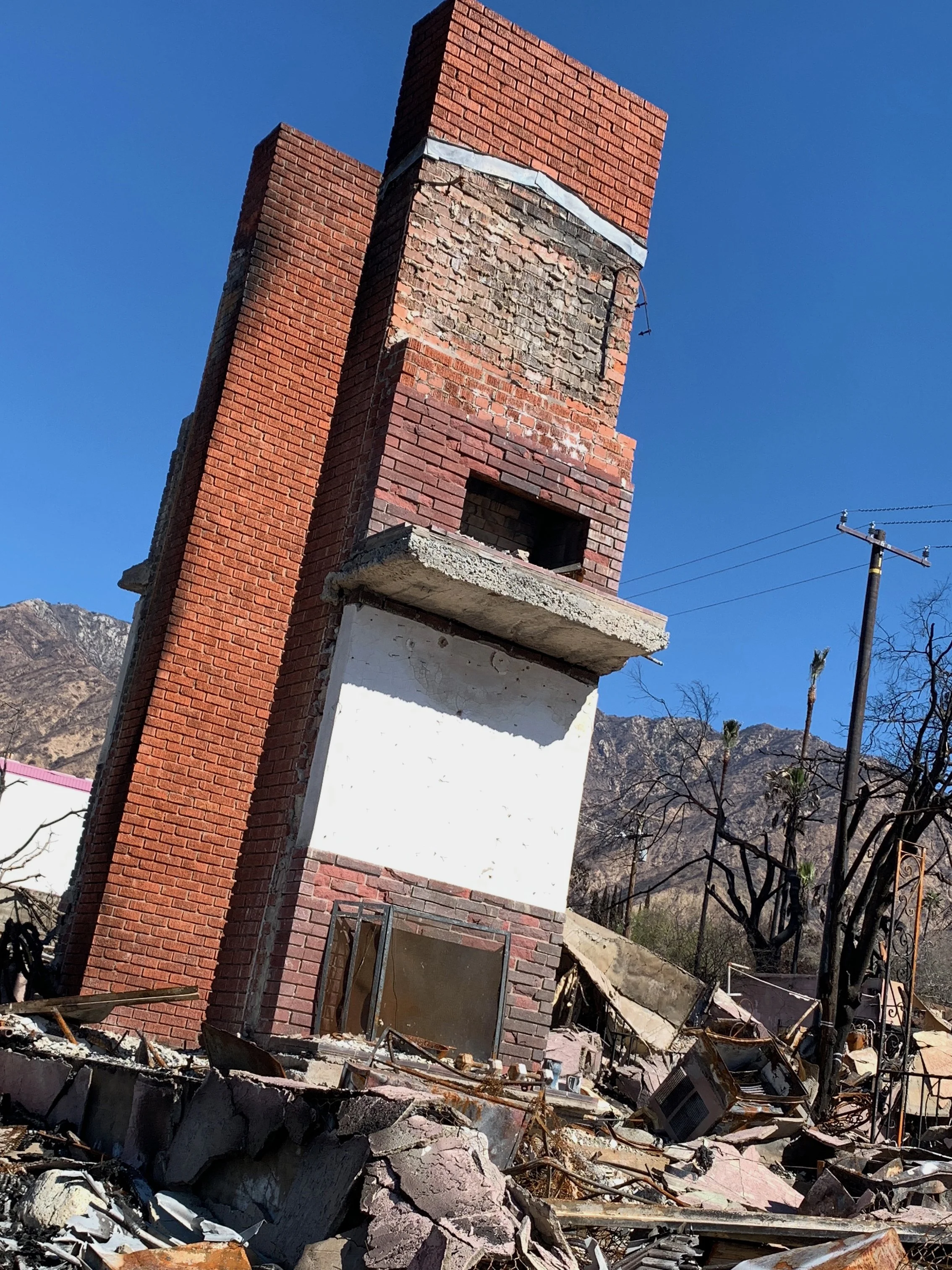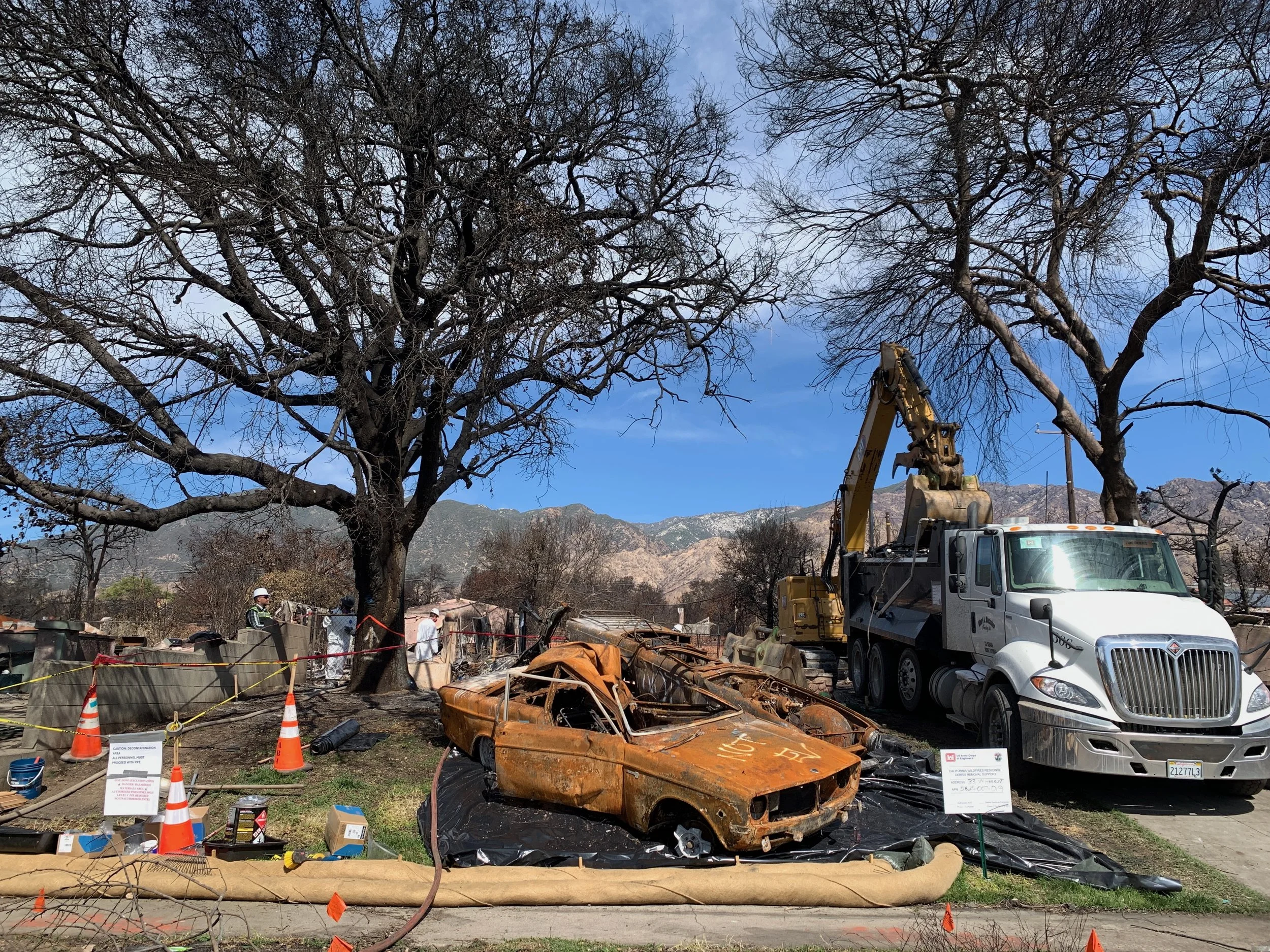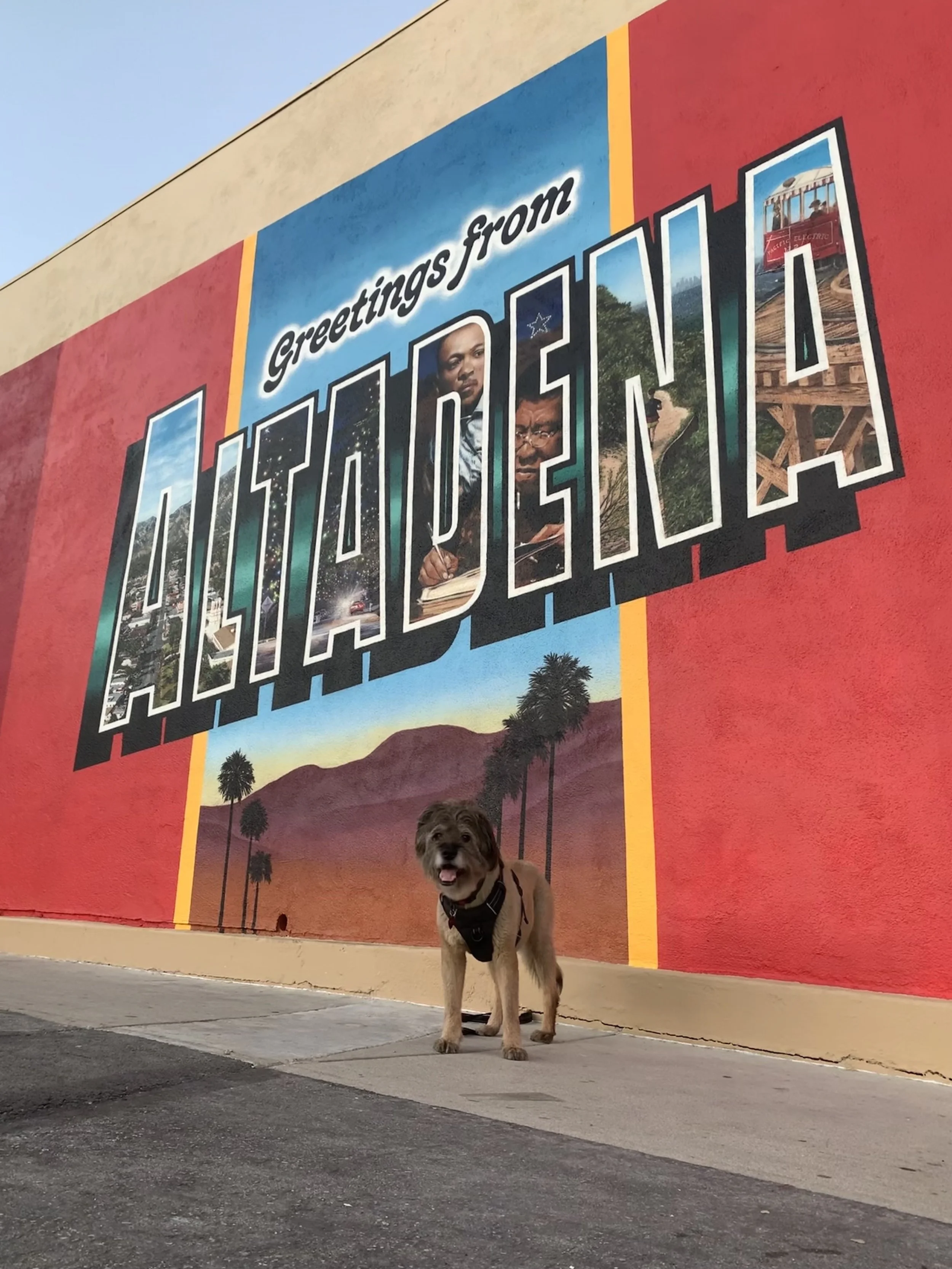Or maybe I couldn’t stop digging because Ted’s house was only one of many places Fergus and I had lived together (including my car)—and whether my worst fears were shady characters, dicey neighborhoods, the stress of living in limbo, or sheer loneliness, never once did that dog fail to make me feel safe.
Maybe that was why I couldn’t stop digging.
• • • •
Question: How long do you keep digging if you’re not even sure what you’ve managed to find?
I kept digging until February 21, when the Army Corps of Engineers arrived with heavy machinery, a line of dump trucks, and a crew of about thirty people to scrape the property clean and haul away everything, including the top six inches of soil.
Because the financial burden of this was so immense and the insurance money covering our rent was sure to run out before the house was rebuilt, Ted was quick to grant Right of Entry and get things going. We were the seventh property on their list.
I was fully suited up in PPE when they arrived, in the throes of a last-ditch dig to find the ceramic pawprint the pet cremation company had sent along with Fergus’s remains. I’d never even cared about the pawprint—until I read on our neighborhood website that one of the few surviving objects people were consistently finding were the clay handprints made by kindergarten kids, prompting me to realize that the rusty old hook I’d unearthed a dozen digs prior was actually the folded metal stand for the pawprint.
Of course, this late interest in the pawprint was seeded by my increased understanding of how I’d botched the search for the ashes. I’d shoveled all that debris from one room to another looking for cremains, when I should have had my eyes peeled for the gold-colored lock instead.
In fact, the day before the Army Corps’ arrival, a volunteer organization finally got me onto their schedule, and twelve people showed up to help me dig—far too large a crowd to search such a tiny space for such negligible artifacts, but this was what the organization did.
Before we started digging, we stood in a circle holding hands as one volunteer prayed on my behalf. Jesus, we pray to you to help Merrill find Fergus’s pawprint and the gold-colored lock from the box of his cremains. One volunteer actually found a piece of the lock in a bucket I’d loaded with debris but she couldn’t remember which bucket or where she’d dumped it. All to say: I kept digging until the first Army Corps excavator rolled up the driveway.
One by one, they hoisted the burned-out vehicles onto the front lawn, shaking free the broken glass and toxic dust while tamping it down with water brought in their own trucks. They filled a procession of dumpsters with the debris of the structure, the foundation, and the stuff of our lives. They cut down the giant oak trees and staked a new sign to mark completion of their work, replacing the red one marked UNSAFE.
The barren lot had been made to look almost pastoral with whatever blue-green substance they used to minimize the dust. And there it was: a clean slate, a fresh start, an Etch-a-Sketch shaken. It was over; there would be nothing else.
• • • •
The following weekend Ted disappeared.
He’d wanted to swing by the house, so he drove the dismal charred streets until he came to our address—the only cleared property on the route. He pulled over, rolled down the windows, and took a nap.
“It just felt so good,” he said. “I could remember how good it felt to get home.”
We rented a U-Haul and had our way with Facebook Marketplace, rounding up a couple of couches and chairs all at once, trying to make the new place feel like home. We walked to dinner and up and down the hills of this new neighborhood. What we do in life, we do in death. We keep walking: dog or no dog, house or no house.
And still, ember to oak, oak to attic, attic to closet.
Ember to oak, oak to attic, attic to closet.
• • • •
But yesterday I went back to the property and walked precisely to the spot where the fireplace had been. I don’t know how I knew, but I did.
I squatted down and dragged a finger across a patch of the blue-green turf, and it peeled back like moss. And right there I found bits of charred wood and, believe it or not, I found the dog’s tooth—not just any tooth but one of Fergus’ completely unmistakable, funny underbite fangs. Exactly where it was supposed to be.
I don’t know what to make of this, except that it’s the tooth I grabbed as he was dying, hooking my finger around it and tugging, yelling, “Hey, Fergus! Fergus!” —such a strange thing to have done, but what I meant was, don’t go. I meant, stay. I meant, please come back.
I swear, the sight of that empty lot at sunset is enough to make you cry.

